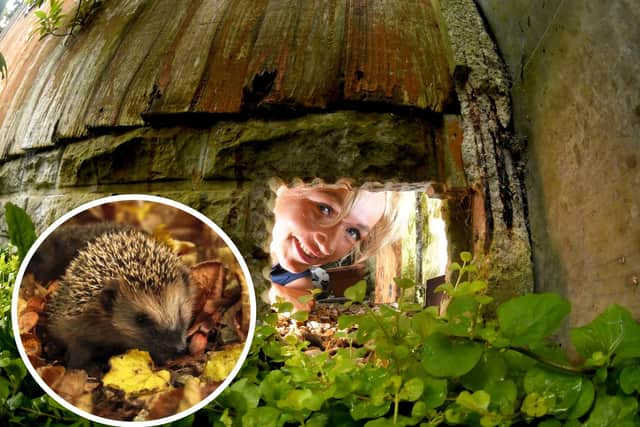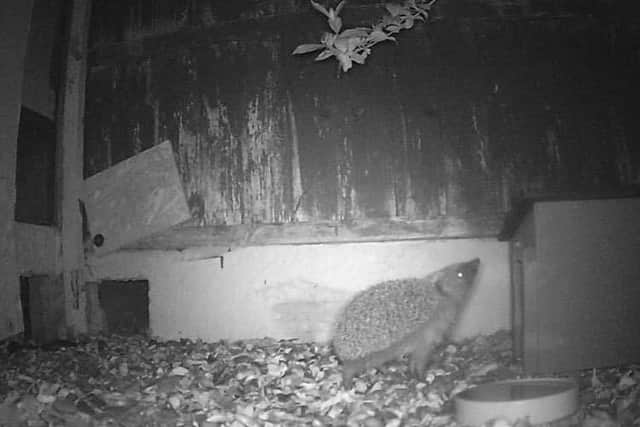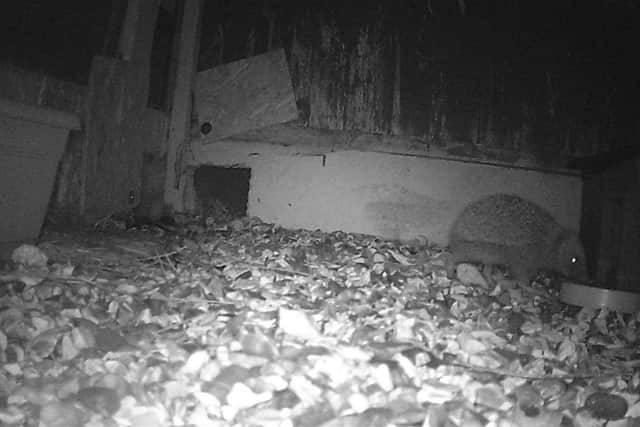'Hedgehogs this way': call for safe routes to prevent the creatures from becoming roadkill on the streets of South Ribble
and live on Freeview channel 276
That is the call from a South Ribble borough councillor who says that she has been disturbed by how many of the prickly mammals she has recently seen dead in the street.
Jo Hindle-Taylor is now working with the district authority to investigate whether it is possible to make the creation of safe routes for hedgehogs a condition of granting planning permission for new developments.
Advertisement
Hide AdAdvertisement
Hide AdHedgehog highways work by ensuring that there are gaps between garden fences, so that they can wander around an area without being drawn towards the dangers of the road.


Cllr Hindle-Taylor, who represents the St. Ambrose ward in Leyland, was moved to install a protected passageway for hedgehogs in her own back garden - and was almost immediately rewarded for her efforts.
“My fence has a solid concrete base and so a neighbour drilled a hole in it for me, 13cm by 13cm - because that’s what hedgehogs need to get through,” she explained.
“The very next day, when I went outside, there was a hedgehog. They’re out there - and they need our help.
Advertisement
Hide AdAdvertisement
Hide Ad“If there are no gaps or holes in fences, then that results in limited movement and isolated hedgehog populations - they need to be able to roam in order to find food, water, mates and a nesting site.


“A gap or hole in the fence gives them a safe green corridor, so they hopefully won't go near roads and not as many of them will get killed. It's also nice to see them in your garden, they’re fun to watch.”
Cllr Hindle-Taylor says that she would encourage groups of neighbours to take the same the hedgehog-preserving action as her if their gardens are not easy for the largely nocturnal creatures to navigate. According to the People’s Trust for Endangered Species, hedgehogs can clock up more than a mile a night on their travels.
“I make sure that I leave water and food out as well, because they’re always on the lookout [and can] become dehydrated,” the recently-elected councillor added.
Advertisement
Hide AdAdvertisement
Hide Ad“Leyland Hedgehog Rescue say that if more people put water out for them, they’d get fewer in the rescue.”


A new ‘small wildlife in the road’ warning sign - centred around the image of a hedgehog - is not erected in places where the animals might need protecting, but only in those where their presence has been found to cause accidents.
The Lancashire Post understands that Lancashire County Council is yet to install the sign - which was introduced by the Department for Transport (DfT) in 2019 - on any of the area’s roads.
While the DfT said at the time that the aim was to warn road users of the hazards posed by small creatures, it added that it was also designed to reverse a decline in wildlife numbers.
Advertisement
Hide AdAdvertisement
Hide AdData from a range of surveys shows that more than half of hedgehogs have been lost from rural areas since 2000 and the creatures have also disappeared from a third of sites in towns and cities. However, in those urban areas where they are still found, their numbers seem to be increasing.
The annual hedgehog survey co-ordinated by the Wildlife Trust for Lancashire, Manchester and North Merseyside last year found that more of the mammals were spotted in Preston than anywhere else in the North West - with almost 500 sightings.
Nationally, it was estimated in 2018 that the total hedgehog population stands at 879,000. However, they are officially classed as vulnerable to extinction in the UK and were added to the “red list” of Britain’s under-threat mammals three years ago.